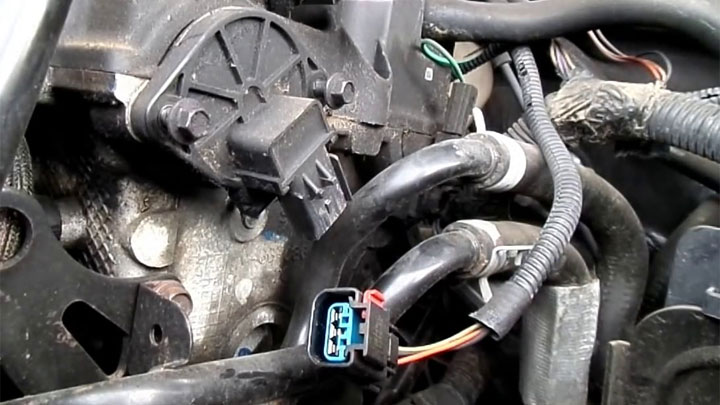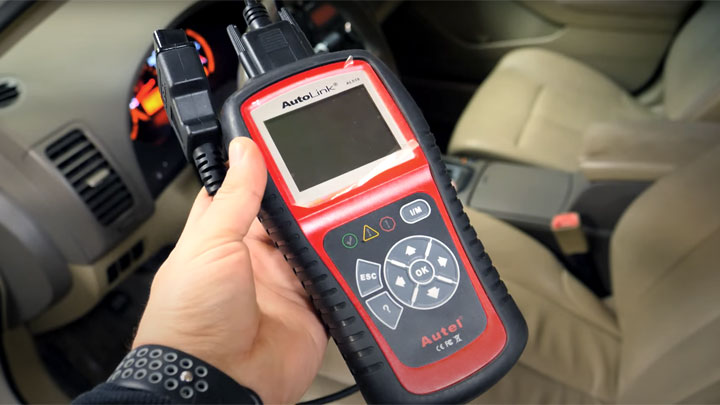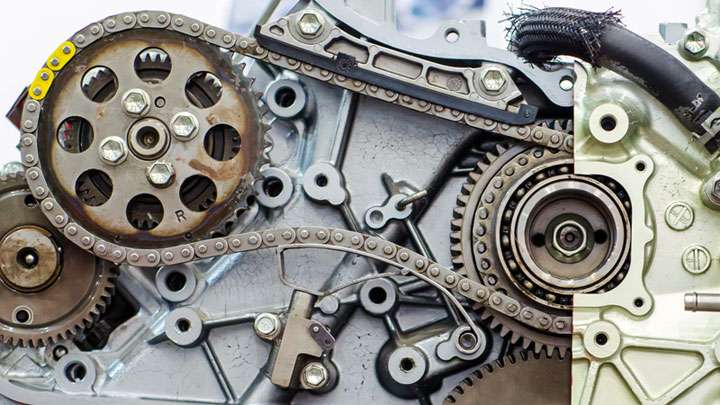Last Updated on August 1, 2022
Today’s vehicles are extremely efficient, using a series of sensors and modules to regulate almost every facet of engine operation. This, in turn, increases performance while minimizing noxious emissions output. A vehicle’s onboard diagnostic system also records any performance faults that might arise.
Of these faults, some carry far more significance than others. This is especially true of any fault related to engine timing. If an engine’s management software is unable to determine the rotational speed or position of the crankshaft or camshaft, engine performance is sure to suffer. In certain cases, severe driveability concerns can arise, further complicating matters.
One of the most relevant, timing-related diagnostic trouble codes is P0341. This code is used to describe one or more problems with the signal from an engine’s camshaft position sensor. This, in itself, can present a number of issues, many of which can leave one quite perplexed.
Read on to learn more about diagnostic trouble code P0341, as well as how to handle such issues, should they arise in the future.
What Does Code P0341 Mean?
Diagnostic trouble code P0341 is indicative of camshaft position sensor performance issues. Simply put, a vehicle’s PCM has determined that the camshaft position sensor is not providing a logical feedback.
This, in turn, leaves the PCM without valuable data related to engine timing. However, to better understand DTC P0341, one must first grasp the concept of camshaft position sensor operation.
All modern engines utilize timing sensors to determine the top-dead center on a specified cylinder. This makes it possible to more efficiently time an engine’s spark and injection cycles. As such, engine performance and reliability are greatly increased. These sensors include the camshaft and crankshaft position sensors.
In the case of DTC P0341, a vehicle’s PCM is unable to rely upon data provided by the engine’s camshaft position sensor. This, in turn, forces the default to default to using a set of backup parameters, which often result in the vehicle entering limp-mode.
Alternatively, some vehicles are able to rely upon data provided by the crankshaft position sensor, in certain cases. However, even these readings are less accurate than those provided by the camshaft position sensor.
See Also: P0011 Code, P0021 Code, P0335 Code, P0340 Code
Symptoms of Code P0341

Diagnostic trouble code P0341 is often accompanied by a host of additional symptoms. While not all of these symptoms will be present in every case, most are prevalent enough to warrant understanding.
The following are several of the most common symptoms associated with diagnostic trouble code P0341.
- Illuminated check engine light
- Engine stalling
- Starting issues
- Reduced fuel economy
- Erratic idle, or sluggish acceleration
- Onset of limp mode
Causes of Code P0341

Diagnostic trouble code P0341 can be caused by a number of different conditions, all of which vary in severity. Understanding each of these potential root causes can assist when attempting to remedy the issue at hand.
The following are several of the most common causes of DTC P0341.
- Faulty camshaft position sensor
- Damaged camshaft reluctor wheel
- Pinched or chaffed camshaft position sensor wiring
- Poor connection at camshaft position sensor or PCM
Is Code P0341 Serious?
Diagnostic trouble code P0341 is considered rather serious in nature, due to the potential ramifications of this condition on engine performance. However, the severity of these ramifications often differs from one vehicle to the next.
Some vehicles will run without issue with a faulty camshaft position sensor, while others will refuse to run.
The extent to which an engine is affected by a camshaft position sensor circuit fault is dependent upon whether a particular vehicle’s PCM will default to reading the crankshaft position sensor. If a PCM does not default to taking timing readings in this manner, most vehicles will enter a self-imposed limp mode.
In any event, the root cause of DTC P0341 should be diagnosed and repaired at the first available opportunity. This prevents one from becoming stranded, should the symptoms associated with this concern worsen.
If you don’t feel comfortable completing such repairs on your own, schedule an appointment with a trusted service center as soon as possible.
How to Fix Code P0341

The following steps can be followed to assist in diagnosing and remedying the root cause of diagnostic trouble code P0341. As always, consult factory-specific service literature for your particular vehicle, before attempting any such repairs.
#1 – Check For Additional DTCs
Before beginning the diagnostic process, check to ensure that no additional diagnostic trouble codes are present via a good OBD2 scan tool. Any codes that are present, should be thoroughly diagnosed and repaired before proceeding.
#2 – Perform Careful Inspection
Begin by carefully inspecting your vehicle’s camshaft position sensor for any irregularities. This includes signs of damage to the harness connector or camshaft sensor itself, as well as frayed or broken wires.
Any such damage should be repaired if possible.
#3 – Check Reluctor Wheel For Damage (If Possible)
If the inspection outlined above reveals no obvious faults, an inspection of the reluctor wheel itself will be warranted. It is often possible to perform such an inspection while peering through the camshaft sensor hole in an engine’s timing cover.
#4 – Check Freeze-Frame Data
Next, watch the camshaft position sensor in action, by analyzing the sensor’s freeze frame data. Attempt to decipher how often this fault arises, as well as the conditions under which it is presented.
#5 – Verify Sensor Input
Check the exact voltages present at the camshaft position sensor, in relation to spec-values outlined by the vehicle’s manufacturer. Carefully verify that all power, ground, and signal sources are intact and provide a steady feed to the sensor itself.
#6 – Check Continuity to PCM
With the use of a quality digital multimeter, and a model-specific wiring diagram, check for continuity between the camshaft position sensor and PCM, on the harness’ signal wire.
If continuity is present, replace the engine’s camshaft position sensor. If continuity is not present, locate the source of the “open” condition within this circuit.




